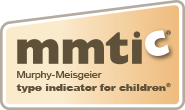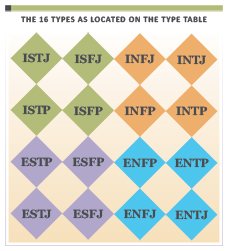Supporting Research
The Murphy-Meisgeier Type Indicator for Children® (MMTIC®) assessment measures student's psychological type, using the same methods as its well-known counterpart, the Myers-Briggs Type Indicator® (MBTI®) assessment. Myers & Briggs Foundation conducts research on personality type in general, and when addressing the needs of school-aged children, examines methods that facilitate learning and self-understanding.
Our research is ongoing, and the following is a selection of published articles authored by our research team.
| The Impact on Student Academic Performance and Attitudes of Psychological Type and its Introduction to the Classroom |
Year-to-year grades (for matched classes and teachers) and student attitudes towards the learning environment improved following type training provided to teachers and students.
| Using Psychological Type-related Teaching Tools to Improve Reading Comprehension |
Fourth graders' reading comprehension scores improved after they were given type-based training and tools.
| The Relationship Between MBTI® and Academic Performance: A Study Across Academic Disciplines |
Examines nine years of student type data in relationship to grade point average at an undergraduate university.
| Student Type, Teacher Type, and Type Training: CAPT Type and Education Research 2008-2011 Project Summary |
The results of a multi-year CAPT study which showed improvement in student grades at four schools in the wake of type training. Also examined are type differences in student academic performance and attitudes towards school in elementary and middle schools.
| Convergent Validity of the MBTI® and MMTIC® Assessments |
Adolescents were administered both the MMTIC and MBTI type assessments. All corresponding scales correlated highly, evidence that the two instruments are measuring the same underlying constructs. Test-retest reliability for all scales on both instruments was also high, as was internal reliability of the MMTIC scales. Students perceived the MMTIC assessment as easier to read, but not age inappropriate, and all students had reading levels at or above grade level (mean age 16).



_thumb.png)




